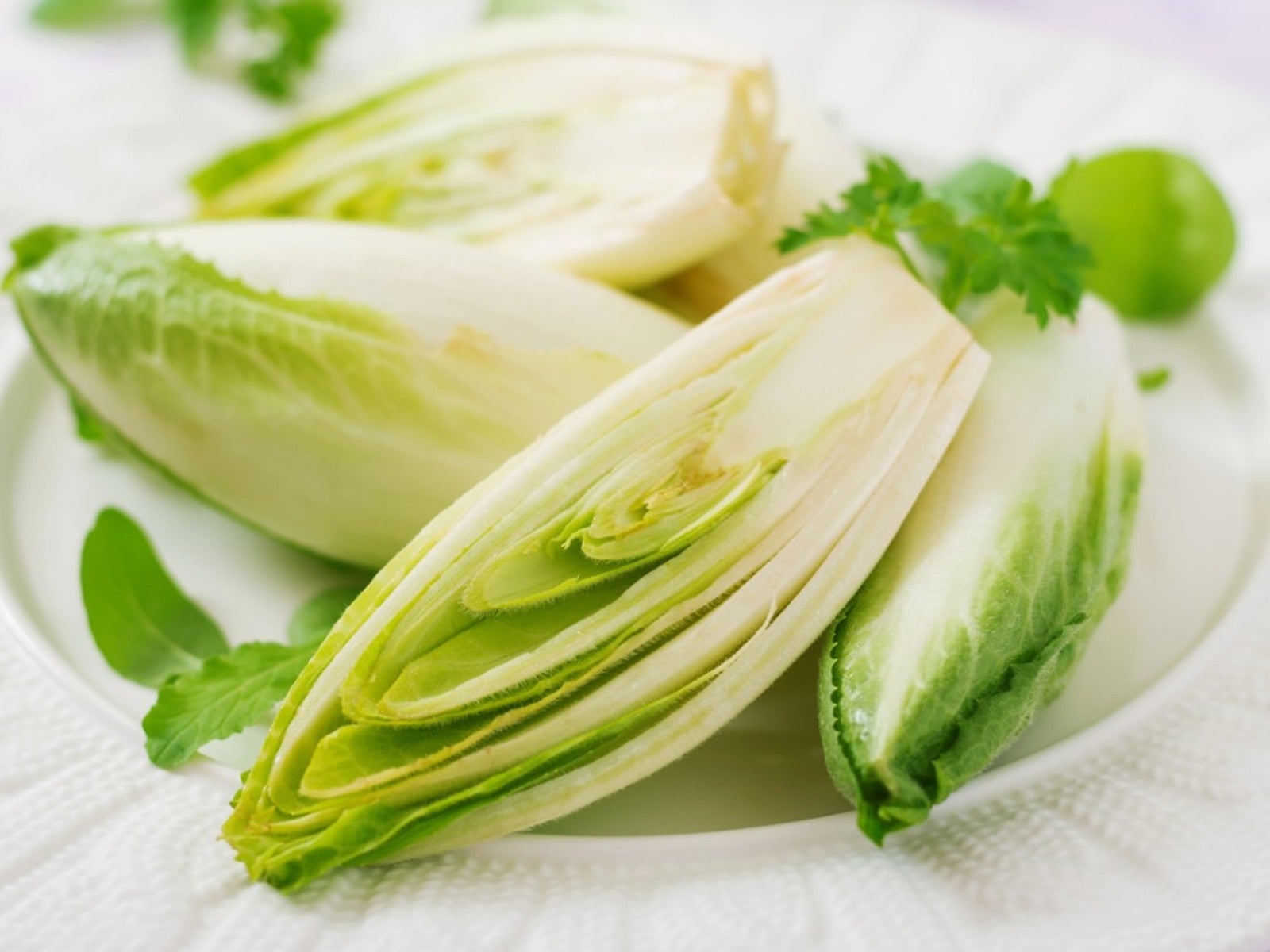Different Types Of Chicory: What Are Chicory, Endive, And Escarole


Sometimes food names can be misleading. Say, for instance, you have a recipe calling for chicory endive. Do you need the coffee additive or salad greens? Obviously, choosing the wrong one would make a big difference in the outcome of the dish. To avoid these problems, let's clarify the confusion between chicory vs. endive.
What is Endive, Escarole, and Chicory
Perhaps you've seen endive, escarole, and chicory heads nestled among the leaf lettuce at your local grocery and wondered if these salad greens are a type of lettuce. While all these leafy greens are members of the aster family, lettuce belongs the Lactuca genus.
Endive, escarole, and chicory belong to the Cicorium genus and are types of chicory. Most types of chicory originated in the Mediterranean area and have been used as a food source for centuries. Chicory leaves are often used as salad greens and in cooking.
Escarole Vs. Endive
To distinguish among the types of chicory, let's first address the difference between escarole vs. endive. The common name “endive” can refer to Cicorium endivia, a biennial species which is usually grown as an annual leafy salad green.
The species C. endivia is available in two leaf types, depending upon the variety. The loose leaf salad green with narrow, curly leaves is usually marketed as “endive,” “curly endive,” or “Frisee.” Broadleaf varieties are often referred to as “escarole,” “Batavian endive,” “grumolo,” or “scarola.”
Both types of C. endivia have mild to slightly-bitter tasting leaves that really add a punch to fresh lettuce-based salads. These leafy greens can also be used in cooked dishes. C. endivia plants form rosette-type heads which can become densely packed with leaves.
Chicory vs. Endive
The term “chicory” is usually reserved for members of the Cichorium intybus species. Some varieties of C. intybus are grown for use as salad greens, others are harvested for their taproot. Confusion can arise when the C. intybus types of chicory are marketed as endive.
Sign up for the Gardening Know How newsletter today and receive a free copy of our e-book "How to Grow Delicious Tomatoes".
To help clarify the chicory-endive confusion, let's explore the different varieties and subspecies of C. intybus:
- Radicchio – Radicchio, also called Italian chicory, this red leaf, head-forming type of chicory is popular in salad mixes and Italian cooking.
- Italian Dandelion chicory – Quite similar in appearance to the leaves of dandelion weeds (Taraxacum officinale), this variety forms dense heads of bitter greens used in fresh salads and for cooking. It can also be marketed as leaf chicory, Catalogna, or asparagus endive.
- Puntarelle – These young, tender shoots or hearts of the chicory plant lack the leafiness of mature foliage. It is also called Catalogna di galatina, ciorcia asparago, or ciorcia di Catalogna.
- Common chicory - A wild variety of the European C. intybus species, this plant's bright blue flowers dot roadsides and fields across the United States. The dandelion-like leaves of common chicory are edible.
- Chicory root - Coffee or coffee additives are made by roasting, grinding, and brewing the taproots of C. intybus varieties such as Magdeburg or Italian dandelion. This hot beverage originated in France during a coffee shortage in the 1800's. It has since become popular around the world.
- Chicon – These tight-headed, leafy delicacies are produced by forcing various varieties of C. intybus roots. Chicons are also marketed as French endive, Belgian endive, white endive, Dutch chicory, or witloof chicory.
With so many different names bouncing around, it's easy to understand why the chicory-endive confusion exists. Rather than relying on marketing names, it's advisable to distinguish the types of chicory by their physical appearance.

Laura Miller has been gardening all her life. Holding a degree in Biology, Nutrition, and Agriculture, Laura's area of expertise is vegetables, herbs, and all things edible. She lives in Ohio.